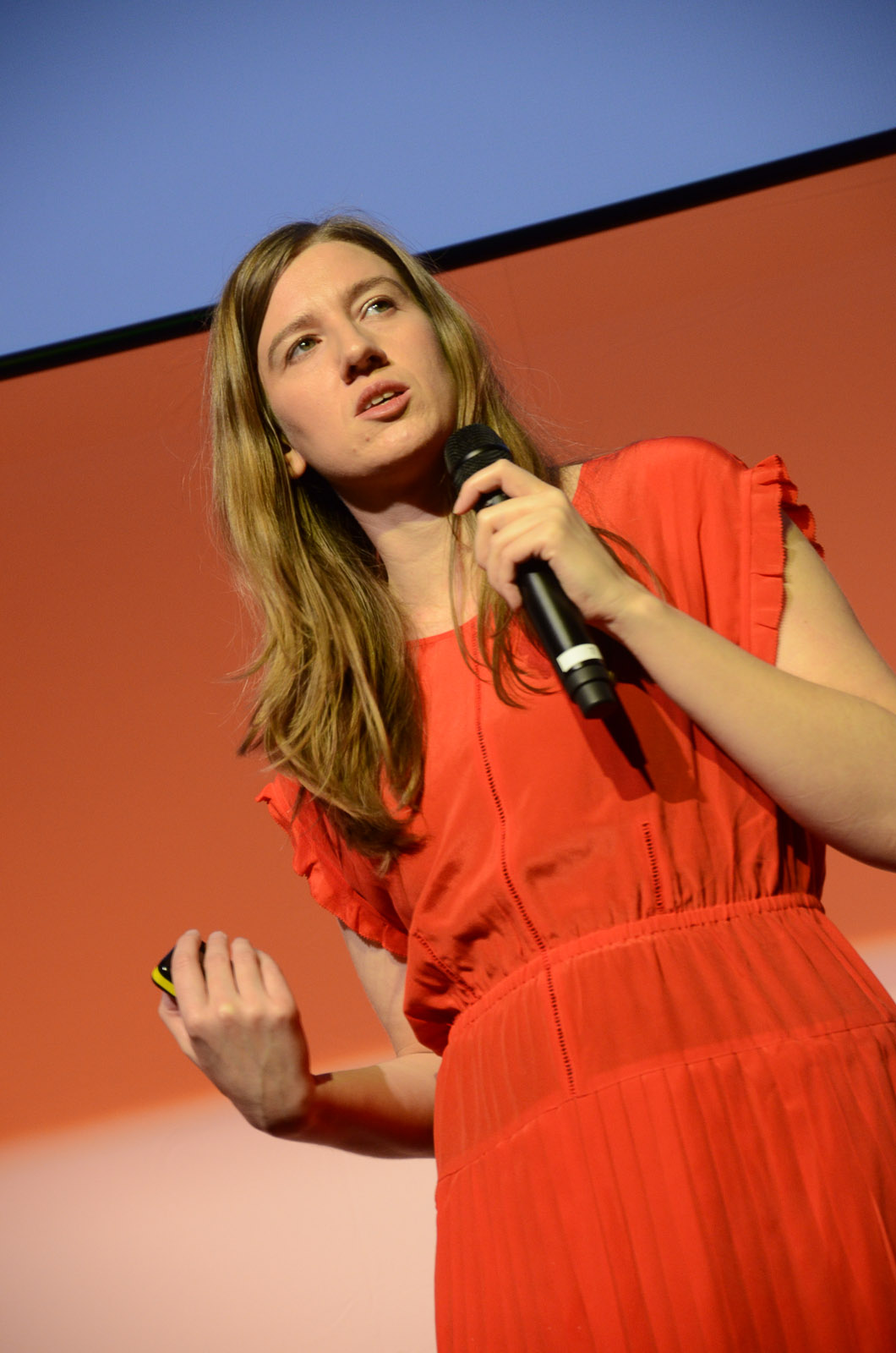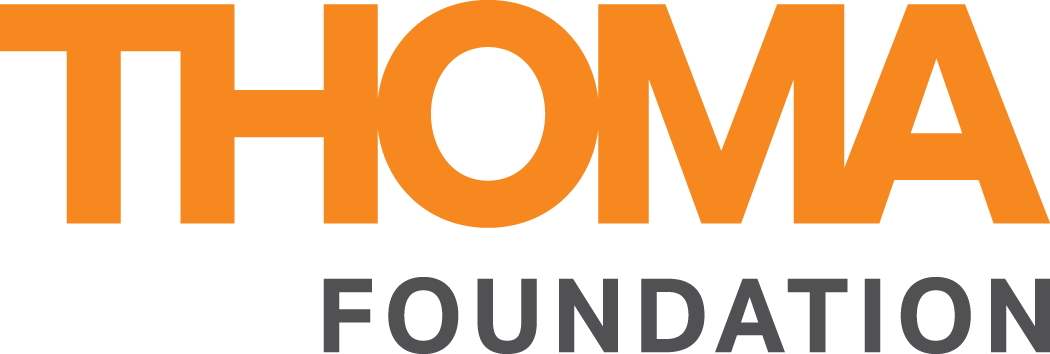
Interview with Joanne McNeil, 2015 Arts Writing Award in Digital Art Recipient
| October 17, 2017 |
The Thoma Foundation’s 2015 Arts Writing Award in Digital Art recipient Joanne McNeil debuts her film Just Browsing, a five-part video series investigating what it means to be an internet user, on Thursday, October 19 at Fridman Gallery, New York City. Presented in collaboration with Eyebeam, the premiere of Just Browsing will be followed by a Q&A session with McNeil and her co-producer Nicole Antebi, and marks the culmination of McNeil’s grant-supported project. We sat down recently with Joanne McNeil to discuss her attempt to represent what it feels like to use the internet in video essay format:
Thoma Foundation: Could you describe the concept behind Just Browsing?
Joanne McNeil: The video series is my attempt to represent what it feels like to use the internet. The internet experience is personal and contextual, and that feeling is hard to capture in film and fiction. Your screen is like a moving collage that (usually) only you see. There’s a lot of digression in these videos, because that’s what searching the internet is like in the moment. The videos document the drama of ordinary screen activity, while I am, essentially, alone in a room. I couldn’t exactly make a series like this documenting me as I read a novel, but I can invite people inside my internet experience.
Before I started the series, I was watching the Hal Ashby movie Being There. I kept thinking how the tv clips in it must have seemed ordinary when the film came out in 1979, but to me, the snippets all looked dated and strange. Just Browsing is homespun futurism in that way: not just for now, but someday I’ll look back on these videos, and consider this style of web browsing as old fashioned as channel surfing in the 70s.
I was lucky to work with brilliant collaborators who helped shape the concept. Nicole Antebi is my co-producer. She filmed and edited the series, adding animation and motion graphics in various sequences. Vince Clarke provided original music that is electronic, but also very human and personal, perfectly matching the mood.
TF: Why is a video essay the best format for this project? Who were some of your influences?
JM: A couple years ago, I was invited to give a talk at Artists Space, but the projector was broken so we had a panel discussion instead, and they filmed me later giving the talk I prepared (but to a near empty room at Artists Space.) For the video, I asked if I could pair my lecture with screen recordings instead of PowerPoint files. Most of my slides were screenshots of websites, and it seemed strange to present them as still images rather than interacting with them, as one might do in a video. I liked how it turned out and always wanted to revisit the idea with a more polished production.
On Youtube, screen recordings and narration are usually random Photoshop tutorials, but there I was reading an essay in this format at the art gallery. Later, I discovered there’s a community of film critics who make video essays to directly respond to the films they are reviewing. So that was in mind as well. And I’ve always loved the video essay form like F for Fake and the work of Chris Marker. Another inspiration was Laurie Anderson’s series of Public Service Announcements. Those videos were some of the first things I ever watched on Youtube.
Another influence was LA Story. I was moving to LA when I began work on the project and I kept watching that movie over and over. Some of the film’s best comedic bits are critical of technology — cryptic messages appear in LED lights on a traffic sign, there’s a home alarm that sounds like a barking dog, and in my favorite bit, there’s face recognition surveillance that identifies the people entering a fancy restaurant. Some visual gags in Just Browsing were my attempt to take the technology of today to absurd conclusions like in the film.
TF: Do you see your work as straddling arts criticism and art practice, and if so, why is it important?
JM: I think of the distinction in the construction of a piece, but not as an identity. Deciding what form a project takes — essay, interactive piece, video, etc — I just think of as the first stage of the writing process. Just Browsing also has curatorial aspects, since a lot of the websites I visit in the videos are the projects of other artists. Maybe because I came to art and writing through the internet, I use techniques and formats to suit a story rather than the other way around.
TF: How did you determine the specific themes of each episode?
JM: I chose topics that I felt best captured what’s unique to the internet at this moment in time. All of the episodes deal with surveillance and identity. “Traffic” is about clickbait and crowdfunding. “Emotions” considers technology that tries to read emotions and alter behavior. “Text” is about bots and automated text. “POV” is about the changing nature of photography. “Stigma” contrasts Silicon Valley culture with the needs of internet users. The Artists Space video considered fake news and Russian media before those topics blew up. I wrote these scripts and filmed the episodes last year, so I hope I’m right on schedule this time. But it is okay if the work feels dated soon. I’m trying to hold on to this moment — what the internet was like in 2017 — just before machine learning, and other forms of automation make everything we experience online now seem quaint and uncomplicated.
TF: What are your plans for the video series going forward?
JM: There will be several more screenings this winter in Boston and other cities. And in a few months, the videos will be posted online with a list of links.
TF: That’s exciting! Keep us posted. And what are you working on next?
I’m finishing up my first book. It’s a look at three moments in recent history: launch of the web, launch of social media, launch of smartphones leading up to now. It is a bit different from typical nonfiction about the internet, because I’m writing from a user’s perspective.
I wonder if Just Browsing’s concept could hold up as a narrative feature. I couldn’t perform it myself, but if I were to work with an actor, I have some ideas about how the format might be compelling with a longer run time. Either way, I’d like to work in video again and other media. I wrote a few scripts for VR experiences and I’m now looking for collaborators. Things I want to see with this technology — particular use of sound, in the absence of edits — I haven’t seen implemented. More importantly, I think VR is desperate for strong writing. I’ve also been writing short science fiction stories. So I have my book (which is a look back), the video series (set in the present), and these fiction projects (set in the future). Covering all the bases.
RSVP for the premiere of Just Browsing here.
